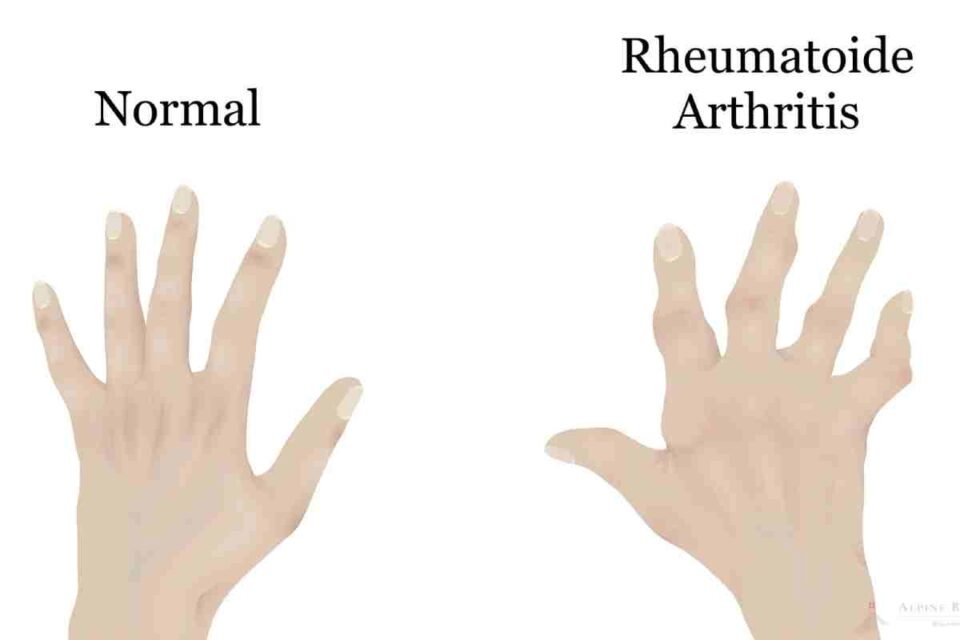Rheumatism: What it is, symptoms, Treatment: Before beginning to define this problem, it should be noted that, as such, the concept of rheumatism does not exist, since it does not appear in medical books. In fact, we speak of rheumatism or even rheumatism to refer to the set of aches and pains related to the musculoskeletal system .
Thus, we speak of rheumatism when a person suffers from some type of disorder that affects their locomotor system. The musculoskeletal system can register up to more than a hundred different diseases. The Rheumatology is the specialty responsible for studying diseases affecting the musculoskeletal system and systemic autoimmune diseases.
The most common rheumatic diseases are arthritis , osteoarthritis , low back pain, osteoporosis, and soft tissue rheumatism.
- Arthritis: inflammation of the joints, which swell causing pain and losing their mobility. The best known are rheumatoid arthritis , Gout …
- Osteoarthritis: there is harm to the cartilage, which progressively degenerates. Mobility is gradually lost.
- Low back pain: of unknown origin, although it is sometimes caused by a herniated disc.
- Osteoporosis: due to the lack of hardness or resistance in the bones, bills appear in them.
- Soft tissue rheumatism: these are tendon diseases, bursitis, myopathies and muscular myostitis …
Table of Contents
Rheumatism prognosis
However, diseases of the musculoskeletal system form a complex and diverse set of pathologies. Rheumatic diseases have a high prevalence, and it is estimated that they affect one in five people, who will suffer some type of physical discomfort. The prognosis of the main rheumatic diseases is as follows:
- Arthritis: evolves in three possible ways. On the one hand, there is acute arthritis, which appears in a single outbreak, which can last for days or months. After the outbreak, the disease subsides. Cyclical arthritis is the most common, and includes up to seven out of ten cases, alternating healthy periods and flare-ups.
- Progressive arthritis: the disease evolves progressively, does not remit and the deterioration is continuous.
- Osteoarthritis: progressively, osteoarthritis will increasingly affect the locomotor system.
- Low back pain: it is a continuous discomfort that affects about 70% of the population.
- Osteoporosis: If left untreated, it can make a person unable to walk and lead a normal life.
Rheumatism symptoms
The symptoms of rheumatism quite controlled. The most mutual symptom is joint pain and swelling. The main symptoms are:
- Pain
- Swelling
- Stiffness and difficulty moving
- Redness and enlarged temperature of the affected area
- Appearance of nodules on the joints
- Feeling exhausted or tired
- Fever
- Lack of appetite
- Irritability
Early detection is essential, since a diagnosis of rheumatic diseases before the disease reaches the bone can prevent its spread.
Medical tests for rheumatism
No big fanfare or complex tests are necessary to diagnose rheumatism. In fact, through a physical examination, a blood test and a radiological examination should be sufficient.
What are the causes of rheumatism?
The causes of rheumatism are unknown , although there knowledge that in some cases this disease is acquired due to genetic antecedents.
However, others may be environmental factors, such as cold, emotional trauma, accidents, infections …
Can rheumatism prevented?
Rheumatism or rheumatic diseases can cause tension in the muscles, deform the spine and even inflame internal organs. There are several ways to try to avoid rheumatic diseases:
- Walk at least a quarter of an hour a day, but avoid physical activities with stress.
- Avoid the cold.
- Avoid using excessive force with your hands.
- Sit up straight.
- Also Sleep between eight to ten hours a day, along with a half-hour nap.
- Avoid being overweight.
- Eat a proper diet.
- Foods that fight rheumatism: foods with quercetin such as onion, cherries, tea, blueberries or citrus fruits. Foods with vitamin D, such as egg yolks, liver, and fish.
- Avoid dairy products, excess sugar and salt, and advanced glycosylates.
Treatment for rheumatism
That is to say, Today there is no treatment or a definitive cure for diseases of the musculoskeletal system. The intention of the treatment is to stop the progression of the disease. Depending on the condition causing the rheumatism (an inflammation, a degenerative …) the treatment is divided into three parts.
- Pain relief: using pain relievers. Non-steroidal anti-inflammatory drugs. Cold application to combat pain.
- Reduction of inflammation: the application of corticosteroids – despite their side effects – can alleviate inflammation.
- Reduce damage: through physical therapy and exercise, mobility preserved. Therefore, physical therapy exercises are important to maintain mobility of the musculoskeletal system.
Food is essential when it comes to fighting rheumatism, since it is necessary to nourish and cleanse the blood. A diet high in sodium should be followed, as well as products rich in Omega 3.
- Recommended foods: citrus, vegetables, greens, whole grains, fruit juice, onion, blue fish.
- Foods to avoid: sweets, alcoholic beverages, saturated fat, refined flour, red meat, potatoes, peppers.
What specialist treats rheumatism?
Due to his training and experience, the rheumatologist the best prepared specialist to deal with rheumatic diseases of the locomotor system. A distinction should made between the traumatologist and the rheumatologist, the former being more oriented to the treatment of serious injuries and surgeries, while the rheumatologist is in charge of the diagnosis and treatment of musculoskeletal diseases.

